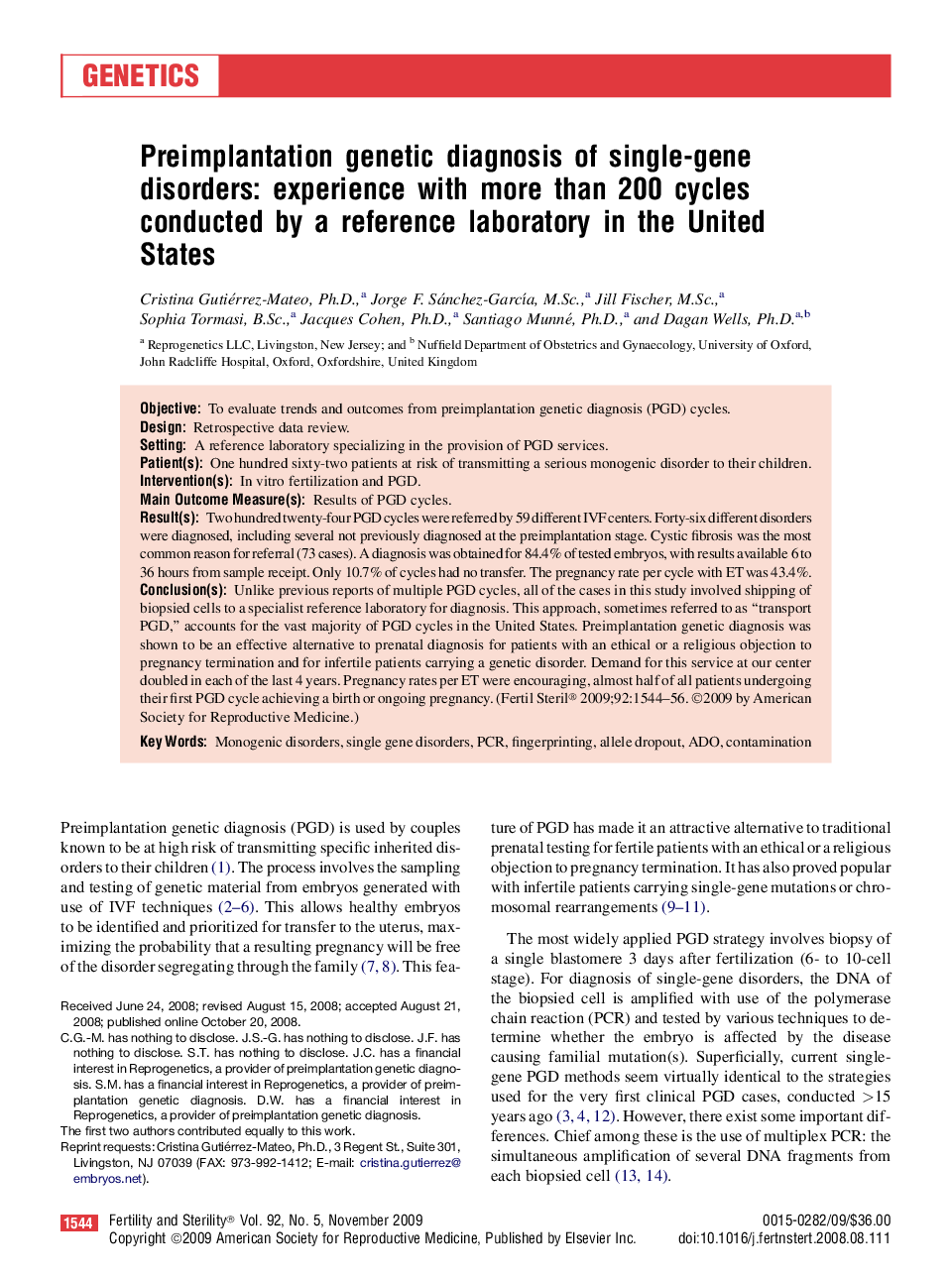| Article ID | Journal | Published Year | Pages | File Type |
|---|---|---|---|---|
| 3941057 | Fertility and Sterility | 2009 | 13 Pages |
ObjectiveTo evaluate trends and outcomes from preimplantation genetic diagnosis (PGD) cycles.DesignRetrospective data review.SettingA reference laboratory specializing in the provision of PGD services.Patient(s)One hundred sixty-two patients at risk of transmitting a serious monogenic disorder to their children.Intervention(s)In vitro fertilization and PGD.Main Outcome Measure(s)Results of PGD cycles.Result(s)Two hundred twenty-four PGD cycles were referred by 59 different IVF centers. Forty-six different disorders were diagnosed, including several not previously diagnosed at the preimplantation stage. Cystic fibrosis was the most common reason for referral (73 cases). A diagnosis was obtained for 84.4% of tested embryos, with results available 6 to 36 hours from sample receipt. Only 10.7% of cycles had no transfer. The pregnancy rate per cycle with ET was 43.4%.Conclusion(s)Unlike previous reports of multiple PGD cycles, all of the cases in this study involved shipping of biopsied cells to a specialist reference laboratory for diagnosis. This approach, sometimes referred to as “transport PGD,” accounts for the vast majority of PGD cycles in the United States. Preimplantation genetic diagnosis was shown to be an effective alternative to prenatal diagnosis for patients with an ethical or a religious objection to pregnancy termination and for infertile patients carrying a genetic disorder. Demand for this service at our center doubled in each of the last 4 years. Pregnancy rates per ET were encouraging, almost half of all patients undergoing their first PGD cycle achieving a birth or ongoing pregnancy.
